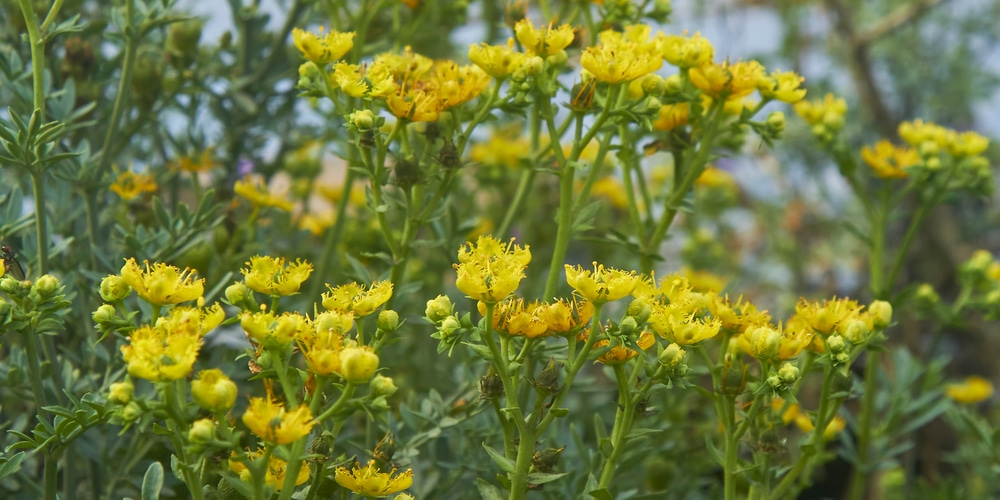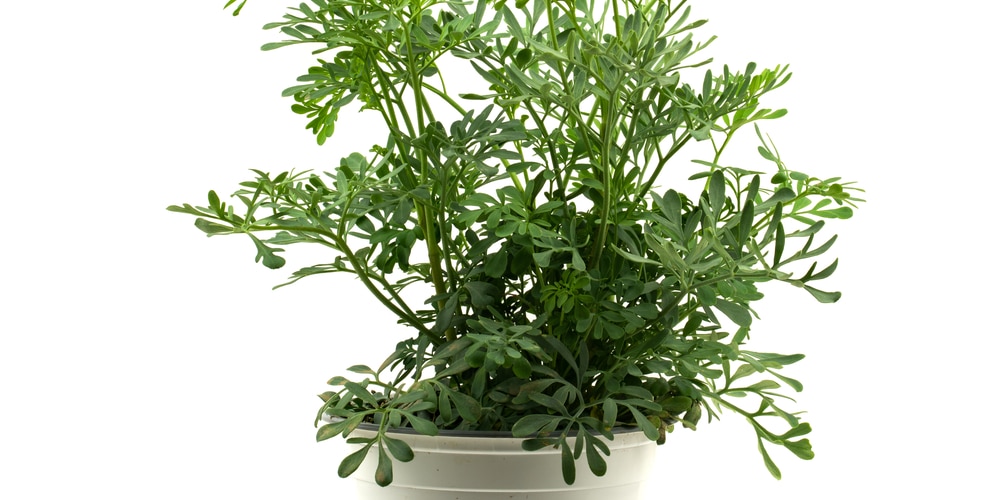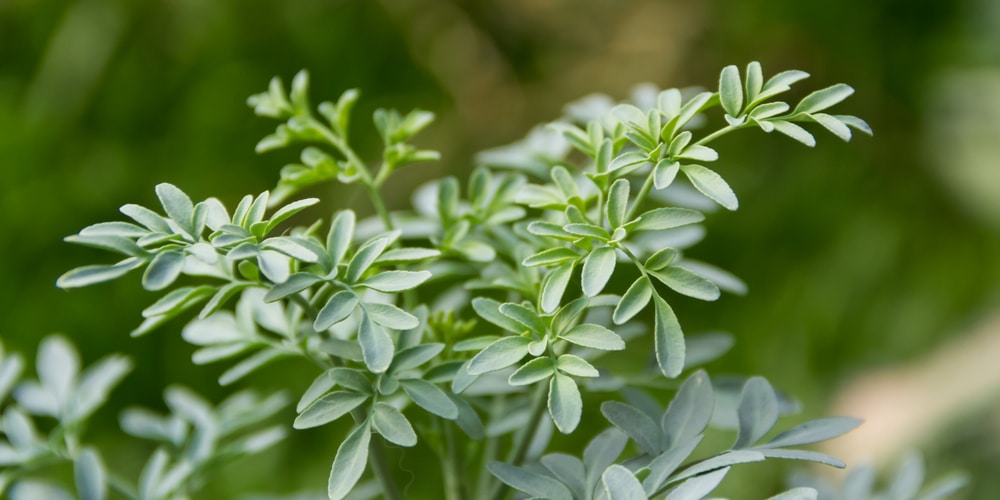ruda plant is a beautiful, versatile plant that can be used in many ways. It’s easy to grow and care for, making it an excellent choice for gardeners of all experience levels.
It is an evergreen perennial that can be grown in containers or the garden. Rue is easy to grow and care for and is an excellent choice for beginning gardeners.
In this article, we will discuss how to grow and care for rue herb and explore some of its medicinal and culinary uses.
Rue In Ancient Times

Ruda or rue is a small, bitter herb with a strong, pungent smell. It has blue-green leaves and small, yellow flowers that bloom in summer. The fresh leaves can be used in salads, but it is more commonly used as a dried herb.
Rue is mentioned in the Bible by its Greek name, “peganon.” It was a popular herb in ancient Rome and was frequently used to make a spicy seasoning paste.
“Ruta” comes from the Greek term “to set free,” which refers to its use in antidotes for poison. Rue was also believed to have magical properties and was used in love spells and potions.
Rue has been a folk medicine for various ailments for a long time. According to legend, fresh sprigs of the herb were scattered on the floor to keep away the plague.
It was also considered a protection against witches. The Catholic Church practiced using the branches of rue and dipping it in holy water. The “herb of grace,” as they call rue, the branches are passed over the heads of parishioners, blessing them.
Rue is also used as a strewing herb due to its powerful odor. Strewing herbs were traditionally utilized to scent rooms and clothes with fresh smells.
Rue Today
Rue has fallen out of favor in contemporary cuisine because our taste preferences have changed. Using a herb that gave a harsh aftertaste to the food, balancing the sweet, sour, salty, and spicy tastes, was essential in the past but is no longer so.
Rue is occasionally utilized in Italian cuisine, notably among Old Italian families whose recipes have been passed down through many generations of chefs. It’s also used in French cooking, particularly in the southwestern part of France, where it grows wild. Cooks use it to flavor grilled meats and vegetables and egg dishes like frittatas and quiches.
The plant is still utilized in many cultures for its traditional medicinal properties. Rue has been shown to have antispasmodic, carminative, and diuretic effects.
Rue is a potent herb with an intense flavor that may become overwhelming if not utilized appropriately. It’s no surprise that its usage has decreased in favor of milder herbs and spices, given its strong taste. Some chefs, however, feel rue adds an essential depth of flavor to certain dishes and are unwilling to give it up completely.
How To Grow Ruda Plant
Rue is a tough and hardy plant that can be grown in various conditions. It tolerates poor soil, full sun, and partial shade. Rue can also withstand drought conditions once it is established.
To grow rue, start with seeds or cuttings. Seeds can be sown indoors in late winter or early spring. Take a six-inch cutting from a healthy plant in late spring or early summer to start rue from cuttings.
Dip the cutting in rooting hormone and plant it in a moist potting mix. Place the cutting in a bright spot and keep the soil moist until roots have formed and the plant is established.
The herb grows best in full sun and well-drained soil, although it is drought tolerant and does not require much watering. Rue plants can reach up to 1.5 meters in height and produce small, yellowish-green flowers. The leaves of the plant are what are most commonly used, fresh or dried.
Harvesting Rue
You can start harvesting rue once the plant is six inches tall. Cut sprigs of the herb as you need them, taking care not to damage the plant.
Care must be exercised when working with rue plants; the plant’s sap is sometimes painful and can cause burns or rashes on people’s skin.
Because ruda plant was used for thousands of years to repel insects, you may harvest and utilize it as an insect repellant in your home. Chop some of the leaves. When dry, it can be stored in preferably bags made of cloth.
You can put these sachets in any area where you need to repel insects. Rue is a versatile and powerful herb with a long track record of usage. Because of its numerous advantages, it will continue to be popular for years to come.
Pruning
Rue is a fragrant perennial known for its beautiful blooms. The plant typically blooms in the spring and summer, although it may also flower in the fall. Before new growth begins, stems should be trimmed to 6 inches in length. This will ensure that the plant has enough vitality to produce good flowers.
If you wait too long to prune, some flower buds may be cut off. In the fall, rue can also be trimmed. This will aid in regulating plant size and form while promoting fresh growth in the spring. Pruning regularly is required to maintain rue’s appearance.
Final Thoughts
Ruda plant is a unique and interesting herb with a long history of use. It has many benefits and can be used in a variety of ways. Rue is a great option if you are looking for an easy herb to grow and care for.
Related Article: What Herbs Can Be Planted Together?

